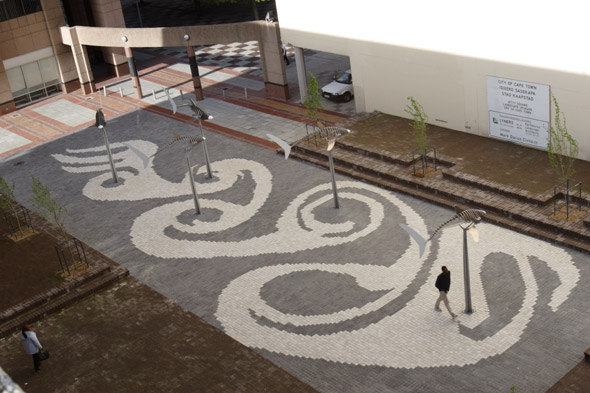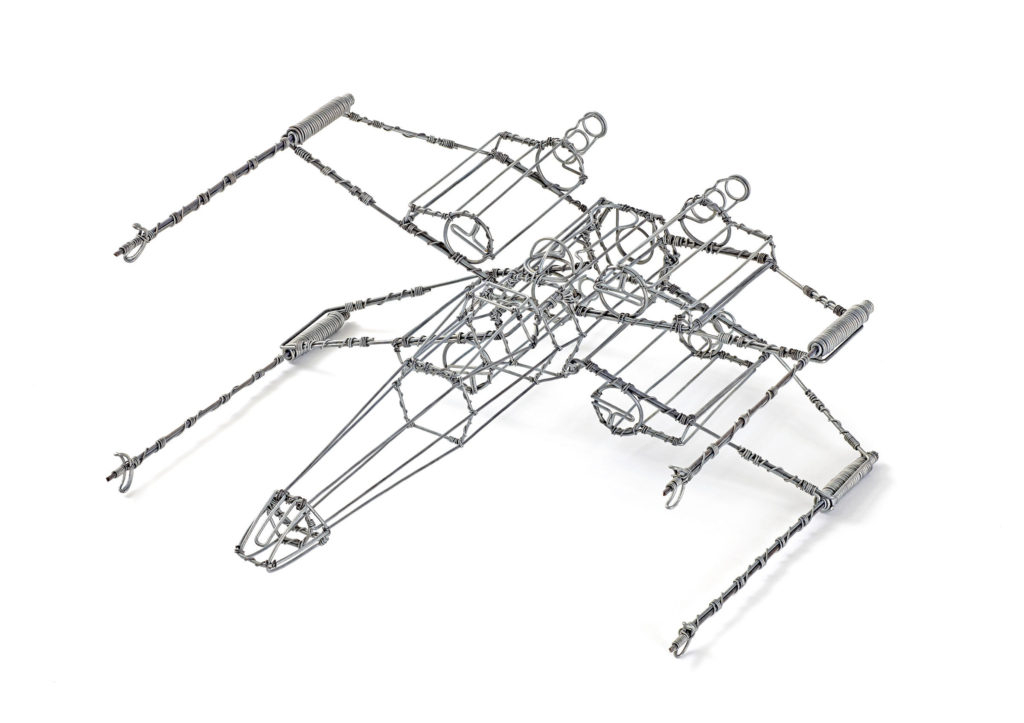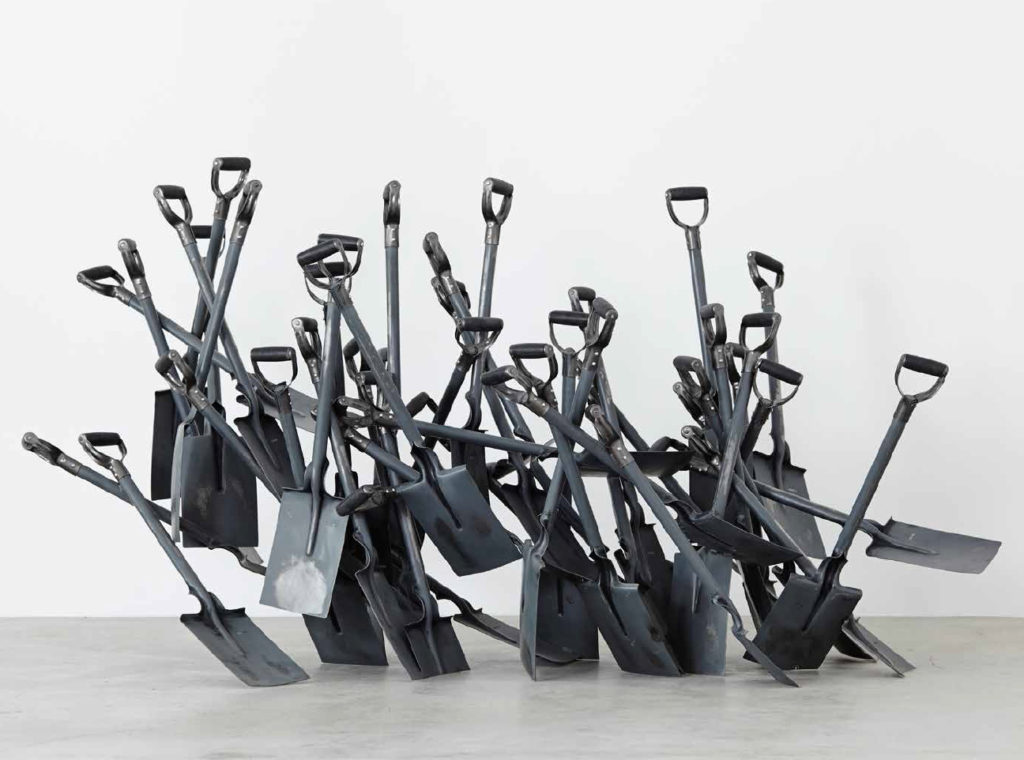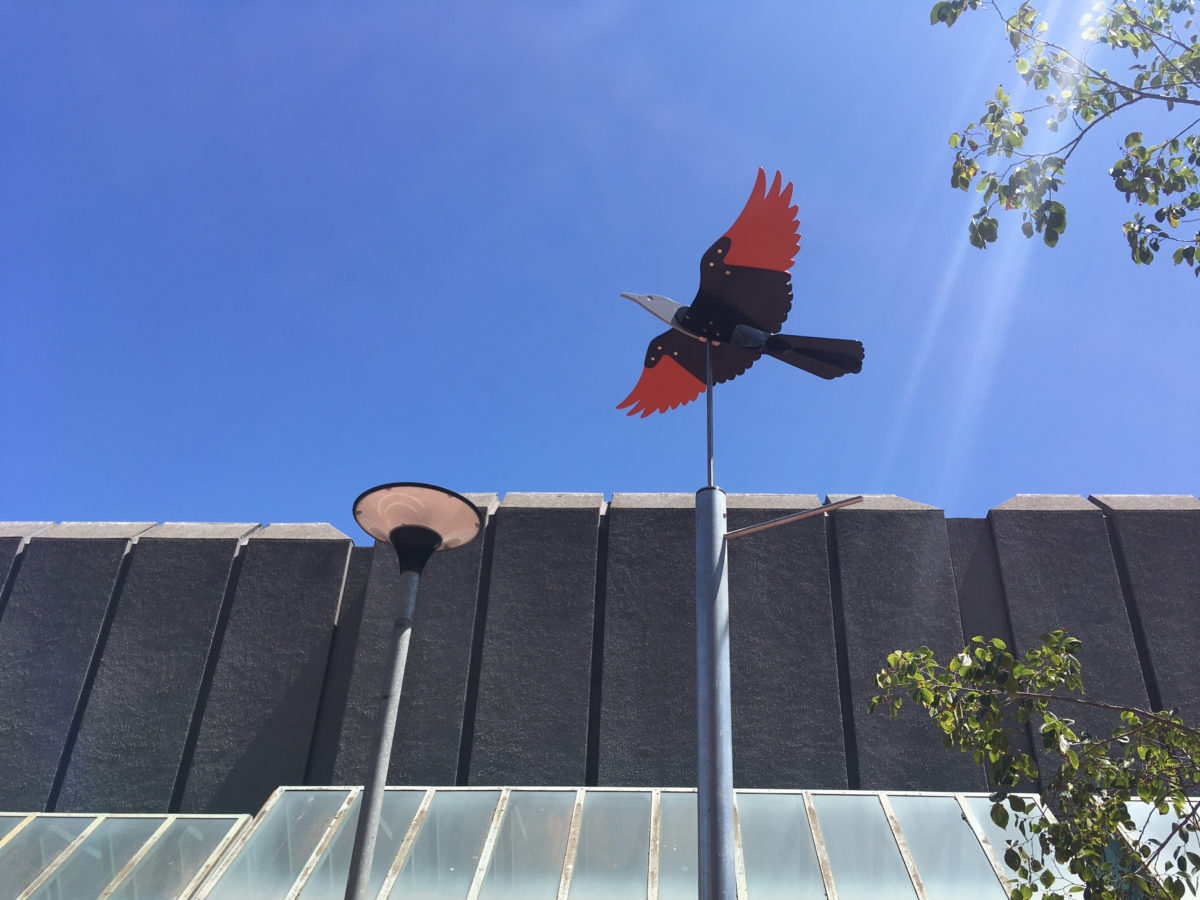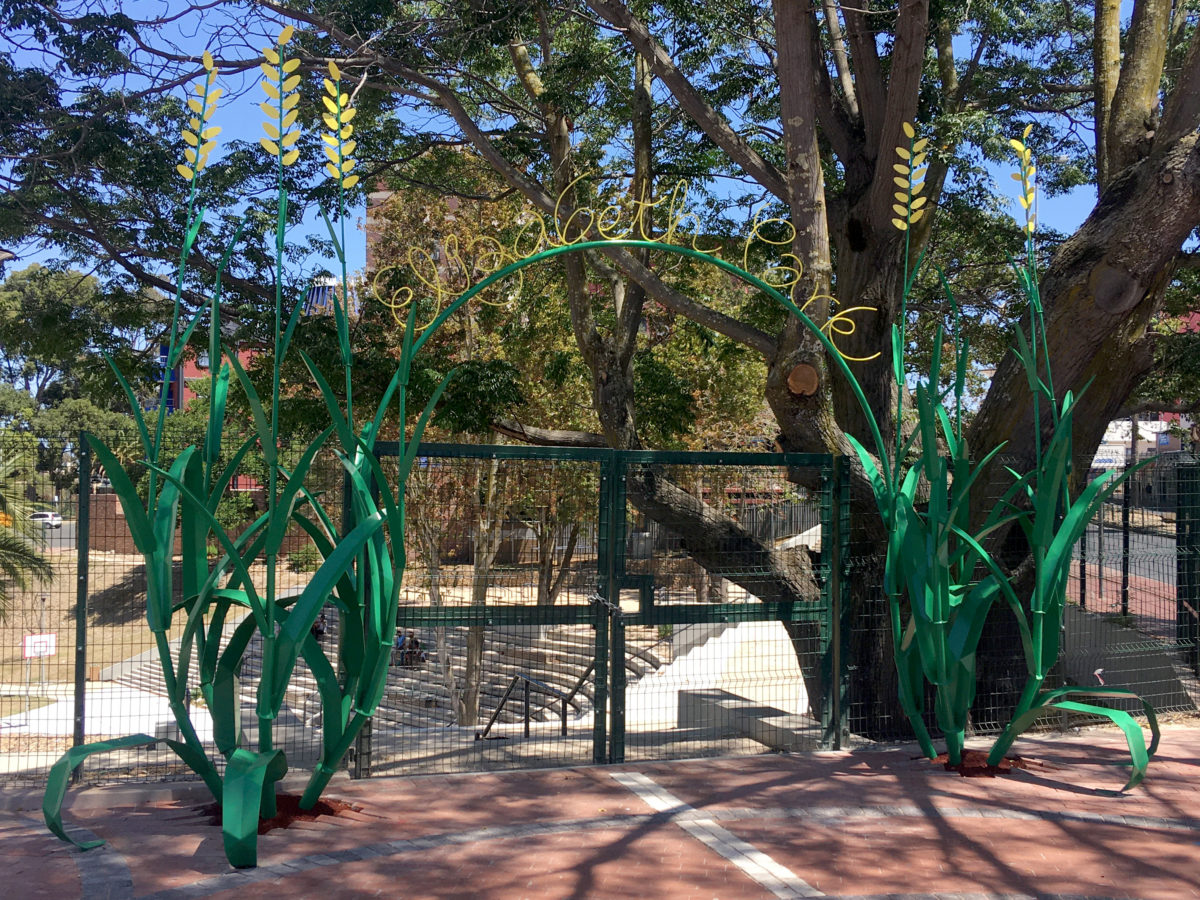In 2005 Earthworks Landscape Architects (ELA) invited me to work on the design for a new public space in Cape Town’s foreshore – land that was reclaimed from the sea within the last century. I produced a group of ghost shark sculptures, that swim through air 3 metres above the ground, pivoting to point into the wind like weathervanes. They emerge from a cobble pattern of stylised water swirls, designed by Diekie van Nieeuwenhuizen of ELA.
The sculptures make a sound when a strong wind blows, through wind-flutes built into their gills. I worked with the musician Brendon Bussy to design and make the flutes, and on the arrangements of tones across the sculptures. They have infrared sensors in their hollow noses, which move the flutes into position when a person passes below the shark. This layer of interaction is not operational; the square is not yet connected to the City’s electricity supply grid. The flutes are fixed ‘on’ at present, so if you visit the square on a windy day, you’ll hear the sharks sing. Cape Town gets very windy, especially in our springtime.
For more visit www.jettysquare.co.za
